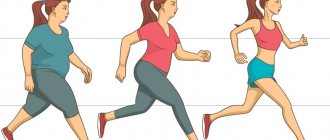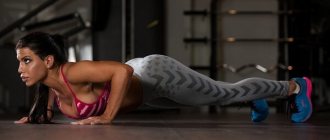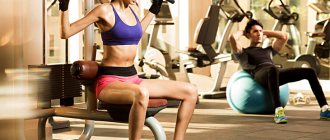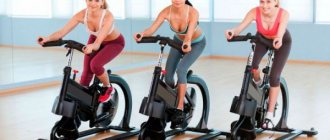What do you think is better for losing weight - running or walking? Most of you will probably choose the first one, since walking seems to many to be a very frivolous and stupid activity. While running has reliably established its position as the main “fat burner”.
Still, don’t rush to conclusions. If you also decide to join the ranks of those losing weight, then you will probably be surprised by the fact that walking can also help you lose excess weight.
So what should you choose in the end - running or walking? Let's try to figure it out together.
Don't put it off until tomorrow, START running today!
Running group “START” - from 0 to 5 km. per month
More details
What is more effective: running or walking for weight loss
It all depends on the degree of physical activity, weight and age of the person. As described above, when running, the effect of flight occurs. All the weight falls on one leg, which is very traumatic if you are overweight. The spine works like a spring.
In flight it stretches, and when landing it sharply contracts. If a person is aged, then the spine is already subject to various changes. Plus, with a lot of weight, the load on the spinal discs is very large. At the same time, after running for 2-3 years, you can get a new disease of the legs or spine. Therefore, if you are overweight and over 18, then it is better to go for walks.
If during running the pulse exceeds a certain mark, the fat-burning effect stops. To do this, you need to calculate the maximum heart rate during training and subtract the total number of years. It is easier to control your heart rate while walking. If there is no shortness of breath during exercise, and you can talk freely, then this is the best pace for burning fat.
Walking for weight loss
Walking is not chosen very often because many people consider it not very effective. In some ways, this is a correct opinion, but on the other hand, it is quite possible to lose weight while walking.
Walking is definitely more beneficial for health, because running puts stress on the heart, spine, lungs and joints.
The mechanism of action of walking is very simple: even if the intensity of physical activity is low, but a person walks for a long time, the blood sugar level changes. When reserves are depleted, the process of lipolysis is activated, that is, fat is broken down and water, carbon dioxide and energy are released. A lot of sweat is produced. All together speeds up metabolism.

To lose weight, you need the energy that enters your body to be processed as quickly as possible. And physical activity by walking for one and a half to two hours will help with this.
How to walk correctly
To walk effectively while losing weight, you need to move as quickly as possible. Race walking is ideal, and its effectiveness is even close to jogging. It has been scientifically proven that the number of muscles worked during race walking is even greater than when running.
Climbing uphill or up stairs also brings maximum benefit, since those muscles that are practically inactive during normal walking or running on a flat surface are connected to this process.
Advantages and disadvantages of walking
Oddly enough, walking can also help you lose weight. But provided that you don’t walk at a snail’s pace.
The advantages of walking include the fact that it is absolutely safe for health . You don't need a track with a special coating to walk; you can walk on asphalt. In this case, the knees and spine will not be damaged.
Also, walking is much easier than running, so your first rush to a new body will last longer than 30 seconds. This means that in the first couple of minutes, walking burns even more calories than running.
The main disadvantage of fast walking is that even if you are a primary school teacher and generally look like God's dandelion, from the outside you will still look like a maniac who is trying with all his might to catch up with the victim, but he cannot run, because everyone around him will understand, that he's a maniac, so he just walks really fast. Add to that a deadpan face hiding a wild zeal to lose weight, and you'll get a few calls to the police department.
Another disadvantage is that walking, whatever one may say, burns fewer calories than running . But I wouldn’t consider this as a key factor, given that you can walk much longer than you can run.
We run to lose weight
To reduce the amount of subcutaneous fat you need to work hard. The metabolic rate should be increased.
Fitness trainers who have been working with people for many years require that their clients fulfill the following requirements: drink a lot of water, adjust their diet and run.
While running, the heart trains, breathing is deep and rapid, blood flows more actively, and the lungs open. It is their disclosure that is most important, because in this way a person speeds up the process of digesting the calories that he consumed during the day.
To gradually lose weight, you should start with simple exercises - regular jogging at any time of the day. It is important to monitor your heart rate here, even if the run is slow. It is under this condition that as many air molecules enter the tissue as necessary for the fatty tissue to break down.

It is necessary to run for at least 20 minutes, because it is during this time that the energy components contained in the muscles and liver will be burned. Consequently, the body will need more energy, and it will take it from subcutaneous fat.
Over time, you can increase the duration of the races. Running with breaks is also significantly effective. This means alternating between fast runs and slow walking. In this case, not only weight is lost, but also the cardiovascular system is “invigorated”.
How to run to lose weight
Many scientists and specialists have proven that interval jogging, that is, running with alternating intervals of acceleration and deceleration for rest, has shown maximum effectiveness in the fight against excess weight.
The best and most proven method of interval running is to alternate between 40-second acceleration and 10-15-second deceleration. To begin with, you need to perform about 8 repetitions. After getting used to it, you can increase their number. It is recommended to run at least 3 times a week.
Interval jogging clearly answers the question of how to lose weight while running, and saves a lot of time. With regular steady running you need to spend at least 40 minutes, but with interval running you can do it in 15 minutes. no problem.
Note! It is recommended to run in the evening after work. This helps relieve stress received during the day and increase the level of the joy hormone, which is actively produced during running.
When should you choose running?
Running should be chosen by young people who are slightly overweight. After all, being overweight will lead to diseases and disorders. Of course, if you run and cover a distance in the same period of time, then more calories will be consumed when running.
Negative and positive sides of running
Walking for weight loss
Among the pros and cons of athletics, there are a large number of them. It should be remembered that before training you need to assess your health status. For example, athletic activity may be contraindicated if you have heart disease or flat feet. Positive aspects of running:
- When fighting excess weight. There is definitely nothing better for losing weight than aerobic running. It is generally accepted that this is the best way of physical activity to break down fat deposits. The greatest number of muscles work when jogging. To evaluate the result, just look at professional runners; they do not have a single gram of fat. The conclusions are obvious, but you need to be careful; for a good result you need to use interval running.
- Financial expenses. And here the athletic activities are at their best. No special expenses are required, all you need is comfortable sneakers and sportswear.
- Skills. Any person from a certain age can walk and run. Accordingly, you do not need any experience or skills to practice.
- Benefit for health. When jogging, almost all muscle groups work. Even the thoracic and cervical regions are developing. The positive effect on the lungs and heart has long been proven. The muscles of the buttocks and legs develop well, and the back and abs also work.
- Mood. It has been proven that during aerobic exercise the body releases a special hormone called dopamine. It is responsible for good mood and psyche, reduces the load on brain activity and improves mood.
The negative aspects of such activities include harm to health. Jogging brings both great benefits and harm to human health. Due to the heavy load on the legs and knees themselves, they suffer greatly from vibrations and constant work. With each push-off of the legs, the main load is placed on the cartilage of the knee joints. Contraindicated for existing spinal problems.

Before training, you need to assess your health status
Important! When running, you need to be extremely careful, since there is a high probability of getting a bruise or sprain. The treadmill is especially dangerous.
What strengthens muscles better?
Both types of cardio exercise increase overall muscle tone, but lead to muscle contractions of varying strength and duration.
When exercising on a treadmill, the following muscles are strengthened:
- lower part of the body (hips, buttocks, legs, calves) - regulate the position of the body, bending the legs, and maintain the balance of the body;
- pelvis, abdomen (abs, iliopsoas muscle) - fix the torso to conserve energy, control rotation of the hips and flexion of the legs;
- back, shoulders (intercostal muscles, biceps, triceps) - work inactively, they are activated to maintain the position of the arms and breathing.
Running does not lead to an excessive increase in muscle mass, but it forms a toned silhouette and promotes the appearance of relief by burning subcutaneous fat.
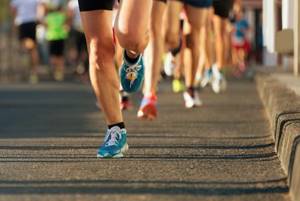
When you walk (fast or uphill), the same muscles in your legs, hips, buttocks, and upper body work as when you run. The Scandinavian technique also uses the muscles of the back, chest, arms and joints of the upper limbs.
How low-intensity aerobic exercise is beneficial for muscles:
- respiratory system - strengthens the diaphragm, pectoral, external intercostal muscle tissue, abdominal muscles;
- hearts - the resting pulse decreases, the cardiovascular system adapts to the stress;
- skeleton - ligaments, tendons, muscle bundles develop, coordination improves.
Results
We analyzed the differences and similarities of both sports. What conclusions can be drawn?
- Running uses a larger number of muscles, requires greater energy expenditure, and its physiology is more complex;
- Both sports have a positive effect on the nervous system, although in different ways;
- To lose weight, it is better to run, however, if your health does not allow it, you can walk. This also helps burn fat, although not as quickly;
- Both exercises strengthen muscles, have a beneficial effect on metabolic processes, and improve health;
- Walking is safer for the musculoskeletal system and joints. It has less impact on the pulse and heart rate, and accordingly, it overloads the heart less;

In conclusion, let's say this: walking is a more gentle form of athletics than running. Provided a competent approach and systematic approach, both disciplines are quite capable of bringing the athlete to his goal. Soberly assess your situation, carefully re-read our article and make a choice. Focus on the result, and it will not keep you waiting.



